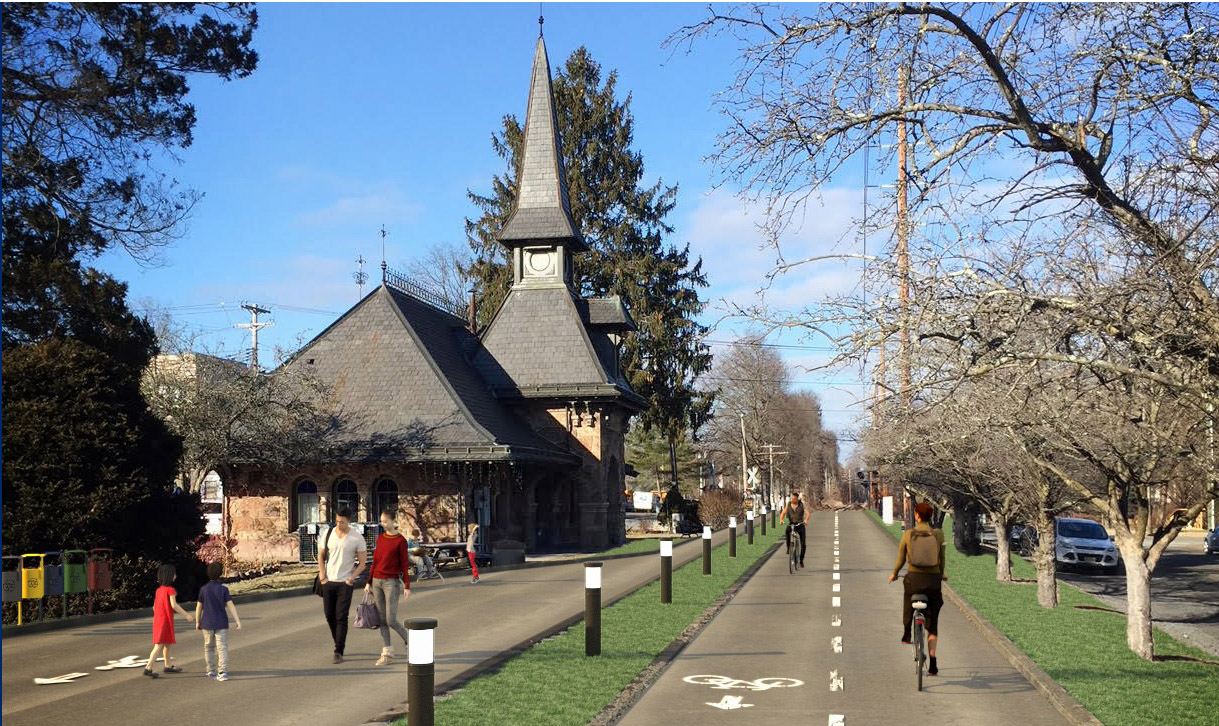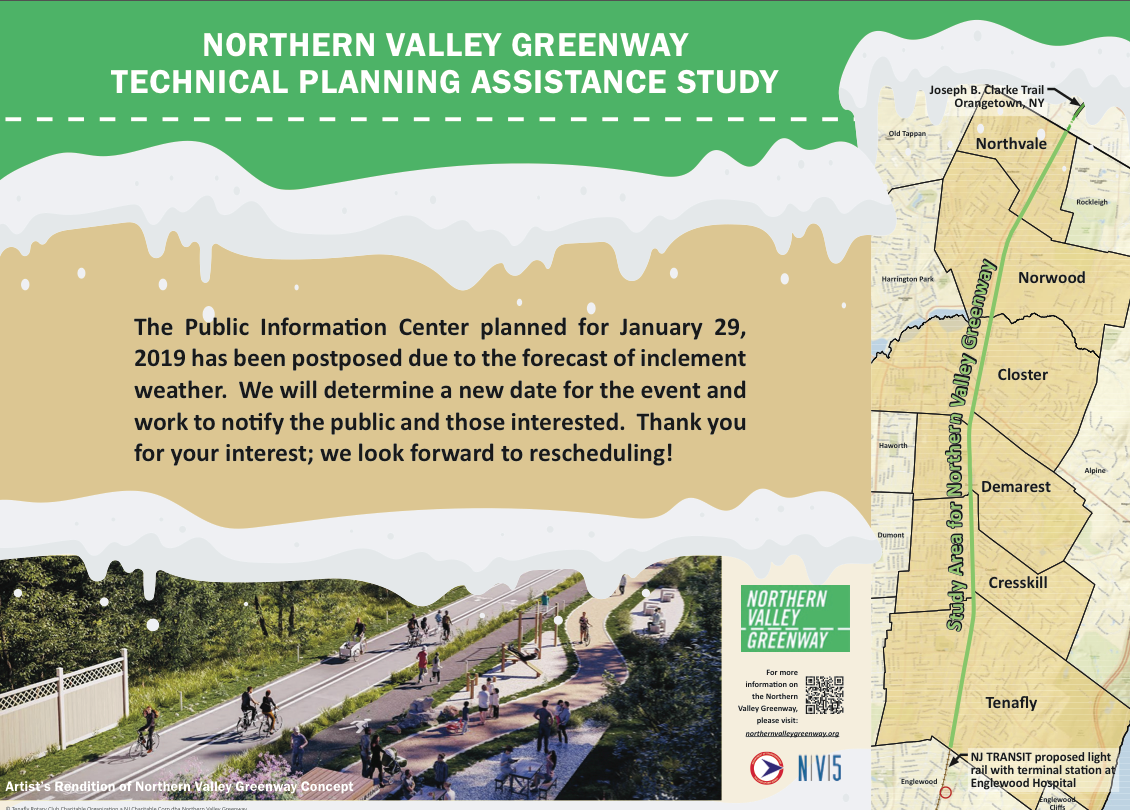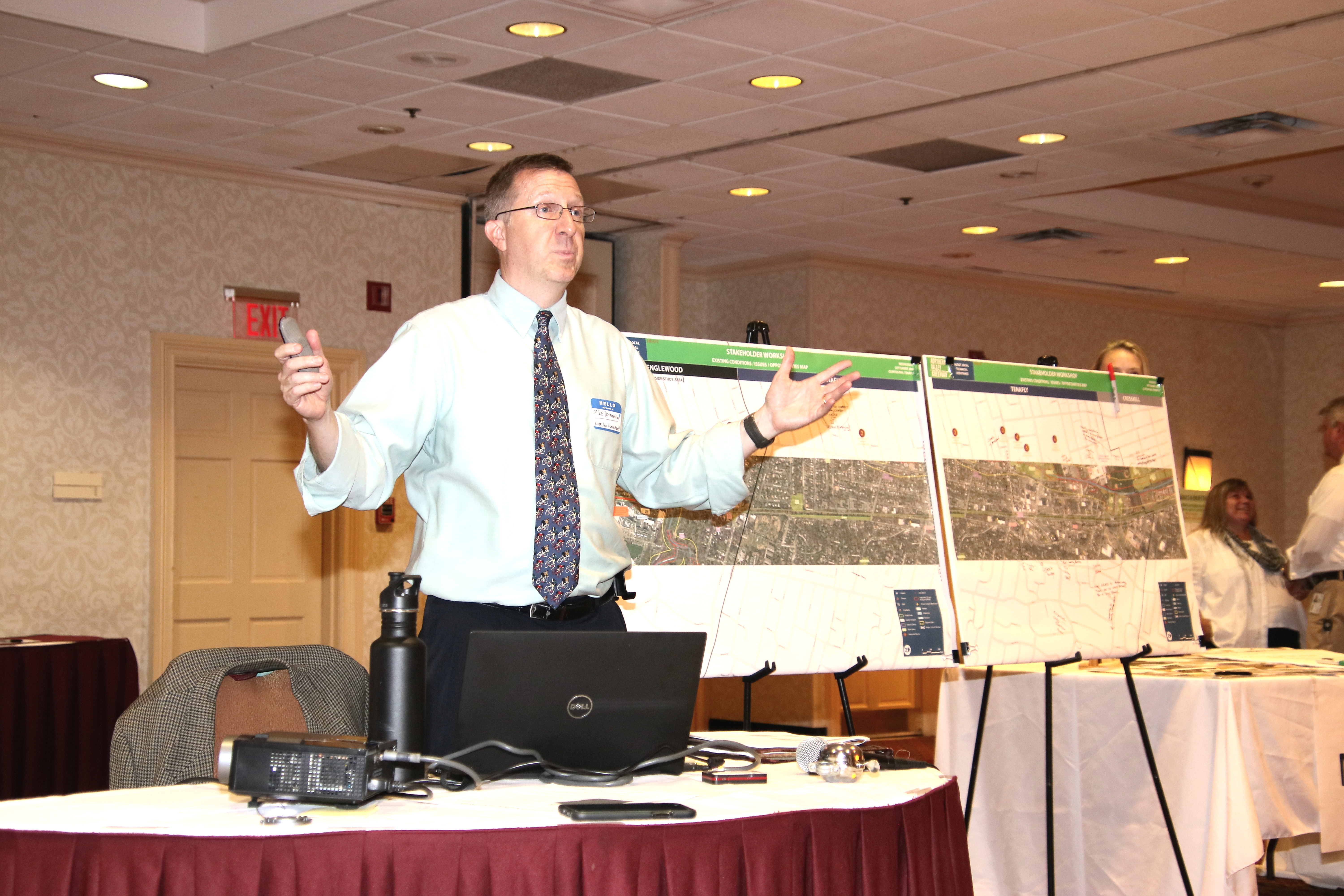
NORTHERN VALLEY AREA, N.J.—A state consultant’s report on design alternatives for the proposed 8-mile Northern Valley Greenway is due within weeks—after which local greenway advocates hope to build public consensus for a multi-town greenway plan that is widely supported by businesses throughout the region, said a greenway supporter and local chamber of commerce president.
The proposed greenway traverses six “core” towns and representatives from businesses in almost a dozen nearby towns have expressed interest in the greenway, viewing the greenway as a future economic boost, said the Tenafly chamber president.
The proposed greenway, a combined bicycle and walking path, crosses Tenafly, Cresskill, Demarest, Closter, Norwood and Northvale, running on an existing unused section of CSX Transportation’s Northern Branch Corridor rail line from north of Englewood through Northvale.
Christine Evron, Tenafly chamber president and a vice president of Tenafly Rotary, said local businesses throughout the greenway corridor “have been extremely supportive” of a greenway coming through.
“[Business] people are always asking ‘do you have the greenway yet?’” said Evron on April 29.
In fact, she said one bicycle shop in Tenafly helped propel the greenway idea saying that such a greenway was a great benefit for local recreation, local businesses and a long-needed amenity.
The Rails-to-Trails Conservancy, a Washington, D.C.-based advocacy group promoting rails-to-trails conversions, cites multiple economic studies promoting the direct economic benefits of a nearby rail-to-trail project in a fact sheet titled “Economic Benefits of Trails and Greenways.”
The fact sheet cites increased business to retailers, restaurants and lodging facilities near such trails.
At March 5’s state Department of Transportation public input session where three designs were presented and critiqued, most public officials voiced support for the “deluxe” linear park version of a greenway, called “Concept A.”
That design offered a greenway corridor up to 60 feet wide. Highlights of the deluxe version include a 16-foot-wide shared pathway for cyclists and joggers, a 4-foot gap between both types of users, and an 8-foot-wide dedicated walking path. The deluxe concept offered the widest pathways as well as separate paths for walkers, runners and bicyclists.
Evron said most businesses see the potential for increased foot and bicycle traffic from nearby greenways, oftentimes a result of a rail-to-trail corridor or bicycle and walking paths nearby.
Evron recently was honored as a “visionary” by Tenafly Nature Center for her part in nurturing nascent efforts to create a greenway into a multi-club Rotary service project. Evron is also Tenafly municipal representative on the greenway project team.
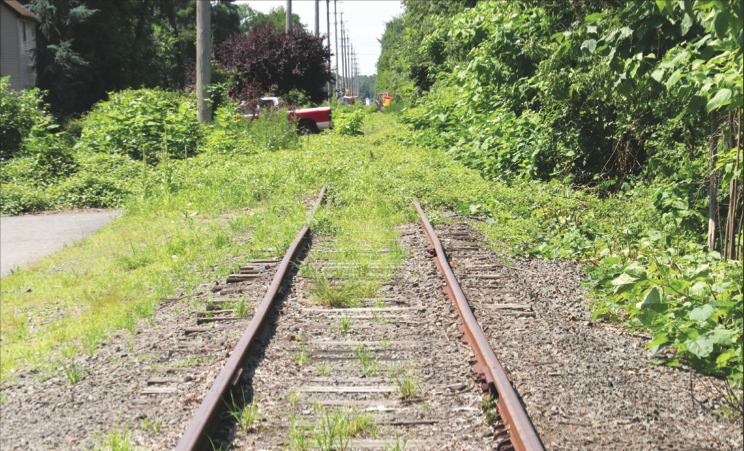
Greenway means ‘more business’
“More [greenway] traffic translates to more business,” said Evron when asked about the perception of businesses for the greenway. She said the only identified downside may be a lack of public parking for greenway users in certain areas, although parking options exist including private parking lots, she said.
Evron said once the report comes out, a committee will consider ways to augment parking but she said “the good news is, all along the greenway, businesses are behind the effort.”
She said one Tenafly business is proposing to expand with a possible outdoor beer garden to offer a cool watering hole for thirsty walkers and bicyclists.
Another valuable component to a greenway—in addition to an economic boost and providing recreational opportunities for area residents—is an increase in area property values near the greenway, she said.
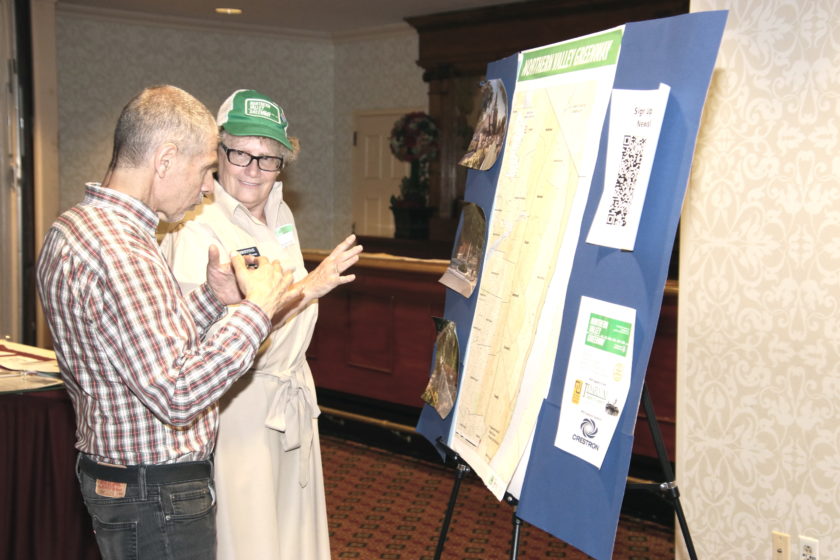
Greenway ups property value
The trails conservancy’s fact sheet cites one study in Wisconsin noting a nearby trail added 9 percent to home property values. Another from North Carolina said a greenway added $5,000 to nearby home values, and that trails/greenways ranked as the “second most important community amenity” of 18 in a national realtors’ and home builders’ survey.
“Perhaps the most famous example of the ability of dedicated greenspace to have such an impact is New York City’s Central Park. Within 15 years of its completion property values doubled and the city raised millions of dollars through taxes,” states the Conservancy’s fact sheet.
Evron noted many businesses nearby the future trail, such as cafes, convenience stores, and restaurants, know they will benefit from an increase in visitors and greenway users.
A major supporter of the greenway effort is the New Jersey Bike & Walk Coalition, based in Montclair, which supports creation of a shared network of biking and walking paths envisioned as the North Jersey Urban Trails Network.
This trails network can provide additional transportation options for bicyclists and runners.
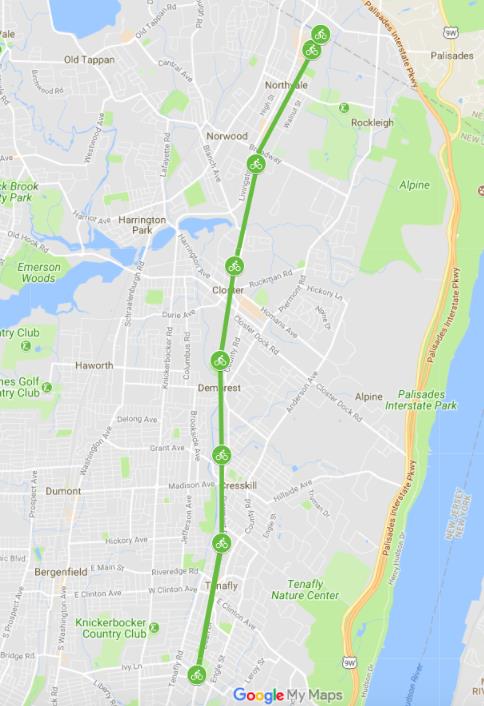
Greenway ‘a major backbone’
In late March, the coalition called the proposed Northern Valley Greenway “a major backbone” of an evolving urban trails network connecting North Jersey to New York State trails. When completed, the greenway will connect to the Joseph B. Clarke Rail-Trail in New York.
“These paths will also provide substantial recreational and economic benefits to towns located along or close to the network (of trails),” said Cyndi Steiner, coalition executive director, in a statement.
Following release of the DOT consultant’s report, greenway project team leader Andrew Mikesh said efforts will focus on public outreach, securing grant funding and negotiations with CSX to develop a “railbanking agreement” to facilitate purchase of the unused rail line.
A railbanking agreement allows use of an unused rail line right-of-way until a railroad might need the corridor again for rail service. The Act was established in 1983 as part of the National Trails System Act to allow thousands of miles of rail corridors nationwide to be preserved for possible future use.
According to Rails-to-Trails Conservancy, often railbanking agreements include the issue of future corridor reuse “to avoid disputes” and note the trail-managing entity is entitled to “fair market compensation” should a railroad need to reestablish rail service.
‘Vast majority of support’
“I actually think this is much more of a grassroots effort supporting this with the vast majority of support coming from individuals and public officials, and businesses see the benefits but that’s more of a secondary support and value to the effort,” said Evron.
Last August, a bipartisan group of elected officials and project advocates gathered to announce that the state Department of Transportation would provide technical and planning assistance to study the feasibility of a multi-town greenway. County officials, including county executive James Tedesco III, said the county Open Space committee was already considering funding for the greenway project.
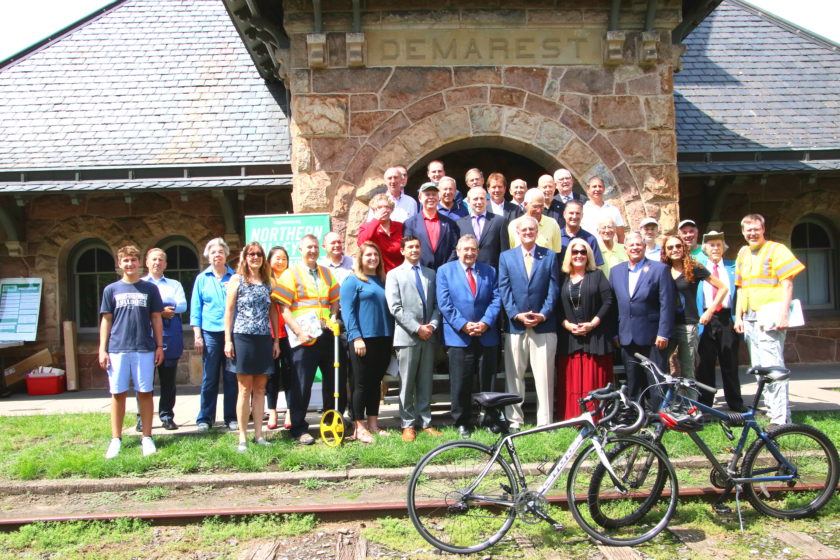
Efforts to reach NJDOT for comment on its soon-to-be-released Northern Valley Greenway feasibility report were not returned by press time, although greenway advocates anticipated a mid- or late-May release date.

